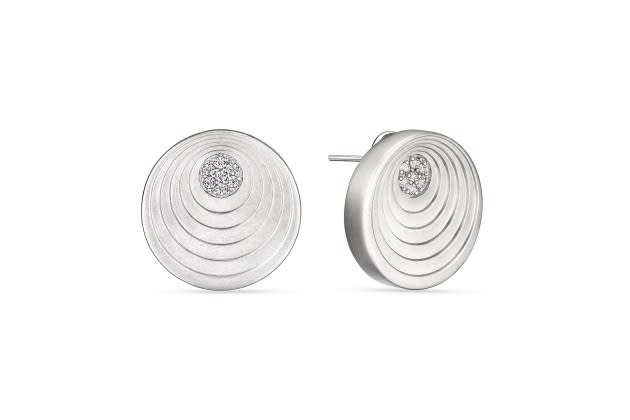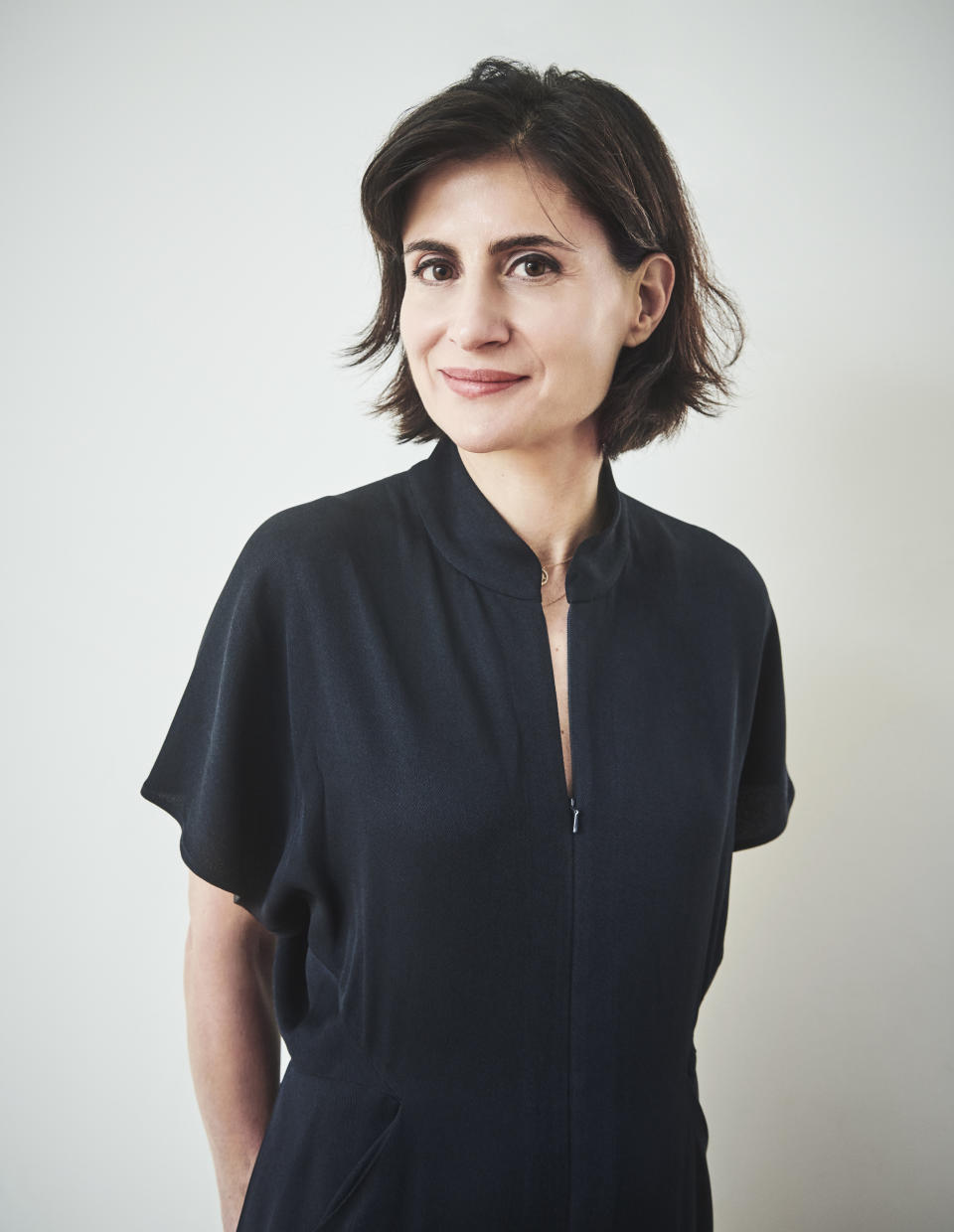Designing Jewelry With an Architect’s Eye

For Amale Andraos, the Beirut-born former dean of Columbia Graduate School of Architecture, the cofounder of the architecture firm Workac, and the architect of the Beirut Museum of Art opening in 2026, creating jewelry was never exactly top-of-mind.
Yet when Robert D’Loren, chairman and chief executive officer of Xcel Brands, contacted Professor Andraos to create jewelry for Xcel’s Judith Ripka brand, she jumped at the opportunity.
More from WWD
“It was out of the blue. I never designed jewelry before and I was in the midst of all this craziness as the dean at the time, and with the intensity of my firm. But It seemed like fun to think about jewelry,” Andraos told WWD.

Last Friday, The Ayah Collection by Amale Andraos at Judith Ripka was launched with rings, necklaces, earrings and bracelets created in sterling silver with accents of white sapphire. The jewelry, priced from $550 for the earrings to $1,995 for the necklace, was inspired by the Art Deco movement, particularly as it manifested in Beirut. “It celebrates design’s ability to hold different elements together, to hybridize influences and to tell new stories,” Andraos said. “I would hope it feels a little unexpected and fresh. You can dress it up or dress it down depending on what surrounds the pieces.
“The challenge was adjusting to the scale,” Andraos said. “When I first started sketching, the pieces were much bigger. I remember the reaction — the team was very excited about the ideas but I wasn’t computing the budget.” The design process, she said, “is always the same across scales, but this experience was very different because the scale of jewelry and the way it relates to the body is so precise. That aspect was quite surprising and different for me. With the Ripka team, we worked collaboratively to fine-tune the scale and to figure out how different jewelry pieces sat on different parts of the body.”
Whether designing jewelry or buildings, “It’s about going from an idea to a sketch to considering different kinds of materials to convey the idea, and working on how these things come together,” Andraos said. “But architecture is stable. It doesn’t move, while there is a kind of a mobility aspect to jewelry where it has to feel solid and fluid at the same time.”
The Ayah Collection by Amale Andraos is a one-off project, though it’s possible the collaboration could have a second chapter. “It’s really fun to think about. I can already see things I would do differently,” said Andraos, who is on leave from Columbia until next fall when she returns to teaching as part of the faculty.
Andraos was dean of the Columbia Graduate School of Architecture from 2014 to 2021. Her New York City-based Workac firm has achieved acclaim for a variety of projects such as the Miami Museum Garage in Miami’s Design District; The Edible Schoolyards at P.S. 216 in Brooklyn and P.S. 7 in Harlem; a public library in Kew Gardens Hills, Queens; the Stealth Building in New York, and a student center for the Rhode Island School of Design.
“If you look at Amale’s body of work, she is known for asymmetry. Most people prefer symmetry in jewelry so it was an interesting challenge for us to wrap our heads around Amale’s aesthetic and make it work in jewelry,” said D’Loren. “There are several finishes on the metal work, from shiny to matte which creates this remarkable sense of balance. There is a tremendous amount of depth. These are truly one-of-a-kind pieces.”
Occasionally, one hears of an architect taking on jewelry — Frank Gehry in 2005 entered into a partnership with Tiffany to create jewelry and tabletop items. Ayça Ozbank created Mara Paris sculptural jewelry that’s wearable architecture. And often, jewelry designers draw inspiration from architectural design. D’Loren, who happens to have a master’s degree from the Columbia Graduate School of Architecture that he obtained before Andraos became its dean, sees it as a logical convergence, noting that both architects and jewelry designers work in dimensions, proportions, in metals and stones. Two other female architects, Elena Manferdini and Rossana Hu, have designed for Ripka’s Adoro and Jie Collections, respectively.
“It’s interesting and fun for these architects to work on such a small scale. It enables us to look at jewelry through a different lens,” said D’Loren. “We take their design inspiration and then have discussions about scale, symmetry and what women look for in jewelry, and we go through conceptual sketches and generally ask the architects to actually develop 3-D images for us. Then we work through them with our product development team and then go through the final samples together.…We think collaborations in general are good for brands. It’s logical for us to work with architects.”


